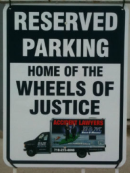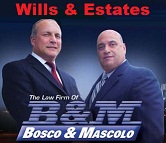Causation in a negligence case
 Thursday, November 29, 2012 at 02:47PM
Thursday, November 29, 2012 at 02:47PM Causation is always an element of a theory of liability in negligence cases. For a plaintiff to win, the injuries must be caused by the accident.
Many years ago, the Committee in Charge of Jury Instructions changed the Causation Jury Instructions. They substituted the word, "substantial" for the word, "proximate", as a modifier of the word, "cause". Juries today are told that the accident must be a substantial factor in bringing about the injuries. The change of this one word makes juries think about the size of a defendant's culpable conduct when they deliberate on negligence and when they deliberate on causation. Before the change, juries only considered the size of a defendant's culpable conduct when they deliberated on negligence.
In negligence cases, a jury allocates percentages to the people who participated in an accident according to the size of their culpability. A participant who is highly culpable is assigned a higher percentage than a participant who is culpable not so much. The total of culpability must add up to 100%. This is how a jury accounts for the size of culpability.
Now, however, by the introduction of the word, 'substantial', a jury gets an undeserved second opportunity to take into account the size of culpability first in their deliberations on culpability and again in their deliberations on causation.
This is akin to making a plaintiff pay the same bill twice. Double charging a plaintiff is simply not fair.
Because a judge does not explain the meaning of the word, "substantial", jurors mistakenly think it refers to the size of culpability. It does not. The word “substantial” in the context of causation does not mean big but means “has substance” or “is real”. Juries deliberate on causation in order to filter out 'no cause' cases. Causation deliberations are not the place for juries to filter out 'small cause' cases - that is done by the allocation of percentages. Both "big" and "small" acts or omissions can be regarded as causes of the accident. To be considered a cause, an act or omission must be a link in the chain of causation. Only if an act or omission is outside of the chain of causation shall it not be considered a cause.
Unsophisticated plaintiffs who are not aware of this defect in the causation charge fall victim to double charging.
On opening, in summation and in the request to charge, a plaintiffs attorney ought to talk about causation in the following manner. Causation is the chain of events that began somewhere, includes the defendant’s conduct and ended in the accident. In deciding the question of causation, the role of the jury is to decide whether the defendant’s conduct is a link in the chain of causation or a stranger to the chain. It is not the job of the jury to evaluate the size of the links in the chain of causation. Links in the chain of causation can be big or small. If a defendant’s conduct is a link, it is a cause of an accident no matter its size; only if a defendant’s conduct lies outside the chain of causation is a finding of no causation justified. The doctrine of causation is not intended to filter out small cause cases, only no cause cases.
John Bosco, a partner in the accident law firm of Bosco and Mascolo, Esqs. LLP, has written extensively on the subject of causation
- Letter to the New York Law Journal July 3, 1997
- New York State Trial Lawyers Institute's Bill of Particulars March 2000 in an article entitled, 'Size Matters'
- Journal of the Association of the Trial Lawyers of America, Trial, December 2003 in an article entitled, 'What a difference a word makes'
- New York State Bar Association, Torts, Insurance and Compensation Section Journal Winter 2004 Vol. 33 No. 1 in an article entitled 'Making a Lightening Bug'
 Elements of a Case,
Elements of a Case,  causation,
causation,  trial in
trial in  Trials
Trials 




Reader Comments